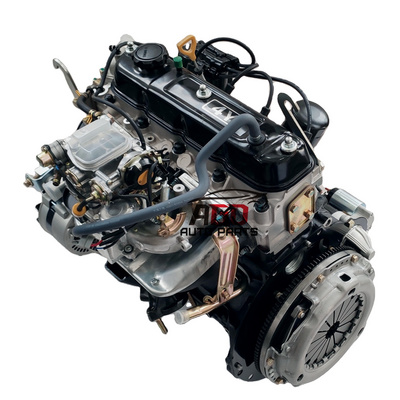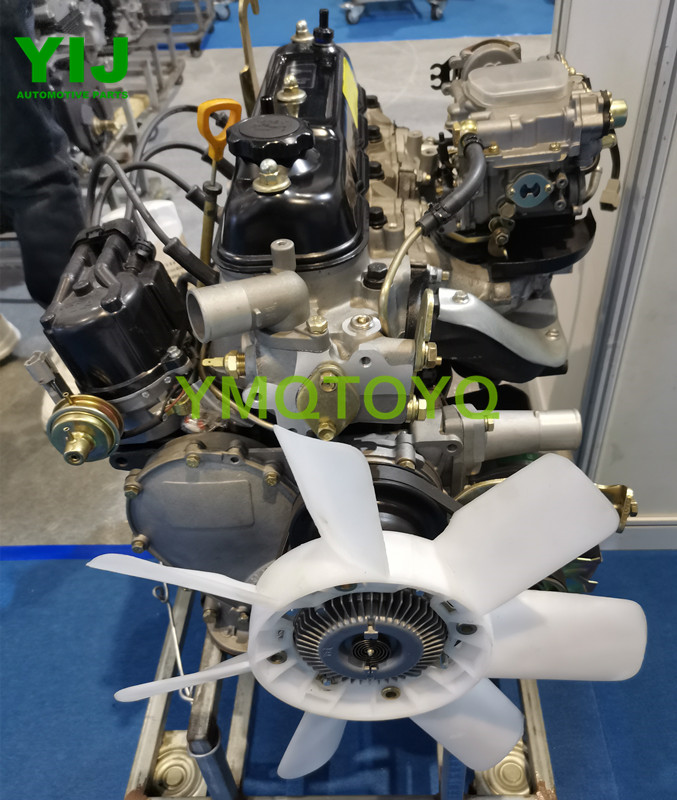How the 4Y Engine Compares to Other Engines in Terms of Fuel Efficiency
How the 4Y Engine Compares to Other Engines in Terms of Fuel Efficiency
Blog Article
Why the Engine Is the Best Selection for Performance and Efficiency in Your Car
The engine remains a pivotal part in vehicle design, largely because of its significant impact on both efficiency and efficiency. As advancements in modern technology allow smaller sized engines to deliver amazing power while optimizing gas economic climate, the integration of functions such as turbocharging and crossbreed systems comes to be increasingly crucial. These innovations not only improve driving experience yet also address environmental worries. The inquiry arises: how do these aspects coalesce to redefine our understanding of vehicle efficiency? Discovering this equilibrium discloses deeper insights into the future of engine design.
Recognizing Engine Kind
Recognizing the various types of engines is vital for maximizing efficiency and performance in automotive style. The main engine kinds consist of inner burning engines (ICE), electrical engines, and crossbreed systems, each offering distinct advantages and limitations.
Internal burning engines, which can be more categorized right into fuel and diesel variants, depend on the combustion of fuel to produce power. Gas engines generally supply greater RPMs and better velocity, while diesel motor are understood for their torque and fuel efficiency, making them optimal for durable applications.
Electric engines, on the other hand, utilize electrical motors powered by batteries or gas cells. They provide instant torque delivery, resulting in smooth velocity and lower emissions. The performance of electric engines is considerably greater than that of ICEs, making them a popular selection for eco-conscious consumers.
Crossbreed systems incorporate both interior combustion and electric engines, leveraging the toughness of both innovations. They enhance fuel intake by utilizing electric power at reduced rates and changing to gasoline or diesel for greater speeds or larger tons.
Selecting the best engine type is essential for attaining preferred performance metrics and ecological sustainability in modern automotive engineering.
The Effect of Engine Size
Engine dimension frequently plays a crucial function in figuring out an automobile's efficiency and effectiveness. Usually gauged in litres or cubic centimeters, engine size straight influences the power outcome and torque characteristics of an automobile. Bigger engines usually generate even more horsepower, allowing higher velocity and greater full throttle. This is especially useful in applications requiring robust performance, such as cars and sturdy trucks.
Nevertheless, enhanced engine size usually associates with reduced fuel efficiency. Smaller engines can supply appropriate performance for day-to-day driving while advertising much better efficiency, making them a preferred option in mid-size and compact lorries.
In addition, improvements in engine design, such as turbocharging and straight gas injection, allow smaller sized engines to achieve power degrees similar to their larger equivalents. This trend stresses the value of not solely concentrating on engine size yet likewise taking into consideration general vehicle style and technology (4y engine). Eventually, the impact of engine dimension on efficiency and effectiveness underscores the demand for consumers to analyze their particular driving preferences and demands when selecting a vehicle
Advanced Engine Technologies
Technologies in engine modern technologies have significantly improved the landscape of automobile efficiency and effectiveness, building upon the foundational principles developed by engine size. Especially, advancements such as turbocharging and direct gas shot have allowed smaller sized engines to supply power degrees formerly connected with bigger counterparts. Turbochargers compress air going into the engine, enabling increased power outcome without a matching boost in engine size, while straight injection enhances gas delivery, boosting combustion efficiency.
In addition, variable valve timing systems have emerged as an important technology, enabling engines to change valve operation based on driving problems. This flexibility boosts both efficiency throughout acceleration and fuel efficiency throughout travelling. Hybrid and electric engine technologies go to this web-site further highlight the change in vehicle style, combining traditional inner combustion engines with electric motors to maximize performance while lowering discharges.
Additionally, advancements in products scientific research have led to lighter, extra long lasting engine elements, further boosting performance and longevity. The assimilation of sophisticated electronic devices and why not look here engine control systems also permits for real-time modifications, ensuring optimum performance throughout different conditions. Collectively, these advanced engine modern technologies not only boost car efficiency however also add to a more sustainable automotive future, showing the ongoing advancement of engine design.
Harmonizing Power and Effectiveness
Striking a balance in between power and efficiency is critical in modern automotive style as manufacturers look for to meet progressively strict exhausts policies while pleasing consumer need for efficiency (4y engine). The challenge hinges on optimizing engine features to provide robust power result without compromising fuel economic situation
To accomplish this equilibrium, designers utilize numerous methods, such as turbocharging, which enhances engine power by compeling in more air, enabling for a smaller engine variation that boosts fuel performance. Variable valve timing modern technologies likewise play a substantial role, making it possible for engines to adjust their performance characteristics based upon driving problems, thereby improving both power and performance.
Additionally, advancements in materials and producing methods have actually led to lighter engine elements, which minimize total vehicle weight and enhance fuel effectiveness without endangering power. Crossbreed technologies have likewise become a viable service, integrating standard inner burning engines with electrical powertrains to give an increase in efficiency while maintaining lower exhausts.

Future Patterns in Engine Design

Additionally, the development of sophisticated products, such as lightweight compounds and high-strength alloys, is readied to transform engine parts. These materials not just lower weight but additionally improve thermal effectiveness, therefore optimizing performance. In addition, manufacturers are checking out variable compression proportions, allowing engines to adapt to various driving problems, enhancing both power result and gas economic climate.
Better, the rise of synthetic knowledge and artificial intelligence in engine style is making it possible for anticipating maintenance and real-time performance optimization. This innovation can bring about engines that self-adjust for maximum effectiveness based upon driving patterns.

Conclusion
In final thought, the engine serves as an important component in achieving optimal efficiency and effectiveness in contemporary cars. The interplay in between engine dimension and design proceeds to advance, driving advancements that balance exciting efficiency with ecological sustainability.
Furthermore, developments in engine design, such as turbocharging and straight fuel injection, permit smaller engines to achieve power degrees similar to their larger equivalents.Advancements in engine technologies have actually substantially reshaped the landscape of auto efficiency and efficiency, structure upon the foundational concepts developed by engine size. Turbochargers press air entering the engine, permitting for boosted power output without an equivalent increase in engine dimension, while direct shot optimizes gas delivery, boosting combustion performance.
Hybrid and electrical engine technologies better show the shift in vehicle design, incorporating standard internal combustion engines with electrical motors to make best use of efficiency while lowering emissions.
Jointly, these innovative engine innovations not just improve lorry performance however additionally contribute to a much more lasting automobile future, showing the recurring evolution of engine style. (4y engine)
Report this page